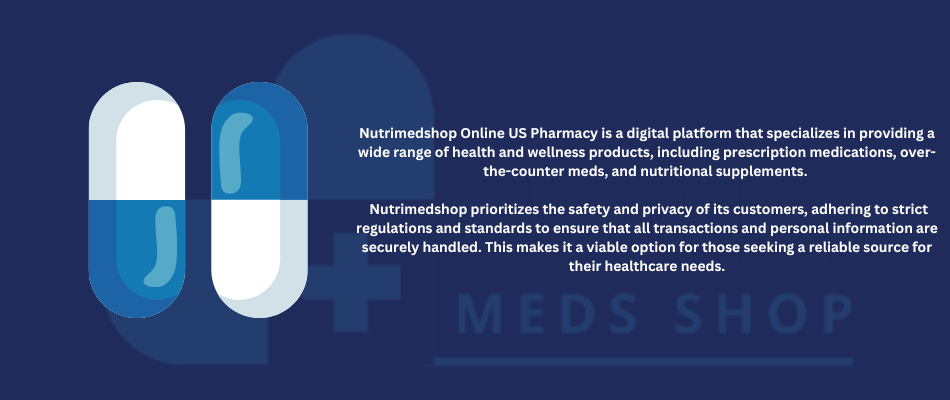- enquiry@nutrimedshop.com
- +1 848-480-6007
- Adderall
- Adipex
- Alprazolam
- Ambien
- Ativan
- Carisoprodol
- Clonazepam
- Codeine
- Darvocet
- Demerol
- Diazepam
- Dilaudid
- Fioricet
- Hydrocodone
- Hydromorphone
- Lorazepam
- Lorcet
- Lortab
- Meridia
- Methadone
- Norco
- Opana ER
- Oxycodone
- Oxycontin
- Percocet
- Phentermine
- Roxicodone
- Soma
- Suboxone
- Subutex
- Tramadol
- Valium
- Viagra
- Vicodin
- Xanax
- Klonopin
- Cialis
Suboxone Category
Suboxone 2mg
$299 - $649
Suboxone 8mg
$309 - $699
Category Description
Buy Suboxone online with overnight delivery at the best prices available. Our online platform offers a convenient and secure way to obtain , a medication used to treat opioid addiction. With fast shipping and competitive pricing.
What is Suboxone?
The two active components of the prescription drug Suboxone are naloxone and buprenorphine. It comes in the form of a film that dissolves under the tongue.
Buprenorphine is a partial opioid agonist, meaning it produces some opioid effects but not to the same degree as full agonists like heroin or oxycodone. As an opioid agonist, it can reduce opioid cravings and withdrawal symptoms.
Being an opioid antagonist, naloxone prevents the effects of opioids. It is added to Suboxone to discourage misuse – if Suboxone is injected, the naloxone will trigger withdrawal symptoms. When taken properly (sublingually), the naloxone has minimal effects.
Suboxone was developed by the pharmaceutical company Reckitt Benckiser. It was first approved for medical use in 2002 by the FDA for the treatment of opioid dependence. The intended use is to help people recovering from addiction taper off of other opioids like heroin or painkillers.
Suboxone binds to opioid receptors and reduces cravings and withdrawal symptoms. The partial agonist effects help stabilize patients while they undergo treatment and counseling. The inclusion of naloxone deters intravenous abuse. Suboxone allows opioid dependent patients to avoid the severe withdrawals often experienced when stopping opioids.
How Suboxone Works
Suboxone contains two primary active ingredients – buprenorphine and naloxone. Buprenorphine is a partial opioid agonist, meaning it binds to and activates opioid receptors in the brain, but with less potency than full agonists like heroin or oxycodone. This helps reduce opioid cravings and withdrawal symptoms.
At the same time, buprenorphine also blocks the effects of full opioid agonists by occupying the opioid receptors first. This blocking effect decreases the rewarding sensations if opioids are taken, which discourages abuse.
Side Effects and Risks
Suboxone, like other opioid medications, does come with potential side effects and risks. Here are some key points to know:
Common Side Effects
Some of the more common side effects of Suboxone include:
- Headache
- Sweating
- Insomnia
- Nausea
- Vomiting
- Constipation
- Dry mouth
Management Techniques
Suboxone withdrawal can be managed in a few ways:
- Tapering: Gradually reducing dosage over weeks or months can minimize symptoms. This gives the brain time to adapt.
- Medications: Clonidine, antidepressants, and anti-nausea drugs may help treat specific symptoms. Other opioids are not recommended.
- Hydration: Drinking fluids and electrolytes can counteract diarrhea and vomiting.
- Rest: Getting extra sleep and taking time off work during peak withdrawal can help.
- Support: Counseling and peer support groups provide accountability and encouragement.
Lifestyle measures like eating nutritious meals, exercising, and utilizing stress management techniques can also help cope with symptoms. Seeking medical oversight from a doctor or treatment program is recommended.
Suboxone FAQs
Prescription medication Suboxone comprises both naloxon and buprenorphine. It’s primarily used to treat opioid dependence and addiction. Here are some frequently asked questions about Suboxone:
What are the common side effects of Suboxone?
Some of the most common side effects of Suboxone include headaches, insomnia, nausea, sweating, constipation, and mood changes. These tend to be mild for most people and often go away within a few weeks as the body adjusts.
Is Suboxone just replacing one addiction with another?
This is a common myth about Suboxone. While it contains an opioid (buprenorphine), it functions differently than opioids like heroin or prescription painkillers. Buprenorphine has a “ceiling effect” which prevents overdose or euphoria. Suboxone reduces opioid cravings and withdrawal symptoms without causing a “high.”
Can Suboxone be abused?
While unlikely, there is a small risk of Suboxone abuse, especially if someone takes very high doses to try to override its ceiling effect. It’s also possible to develop a dependency on Suboxone. However, it is far less addictive than full opioid agonists. When taken as prescribed, its abuse potential is low.
What happens if you stop Suboxone suddenly?
Abruptly stopping Suboxone might result in symptoms of opioid withdrawal, including anxiety, sweating, sleeplessness, and muscular pains. It’s important to slowly taper off Suboxone under medical supervision. A gradual reduction over several weeks to months makes withdrawal more manageable.
Is it easy to get off Suboxone?
Many people find Suboxone difficult to stop taking due to dependence and withdrawal symptoms. However, with a slow taper, counseling, and support, it is possible to successfully discontinue Suboxone. Withdrawal tends to peak in the first 1-3 weeks and then gradually improves over several months. The process is easier with medical and psychosocial support.
How long does Suboxone block other opioids?
Suboxone binds very tightly to opioid receptors. A single dose can block other opioids for 24-48 hours. With regular use, it can take up to 72 hours after the last dose for the blocking effects to fully wear off. The naloxone in Suboxone also helps block other opioids.
Can Suboxone be taken for chronic pain?
While not FDA approved for pain, some doctors prescribe Suboxone off-label for chronic pain management. Because it’s a partial opioid agonist, it may provide pain relief with a lower risk of respiratory depression compared to full agonists. However, more research is needed on its effectiveness for chronic pain.


